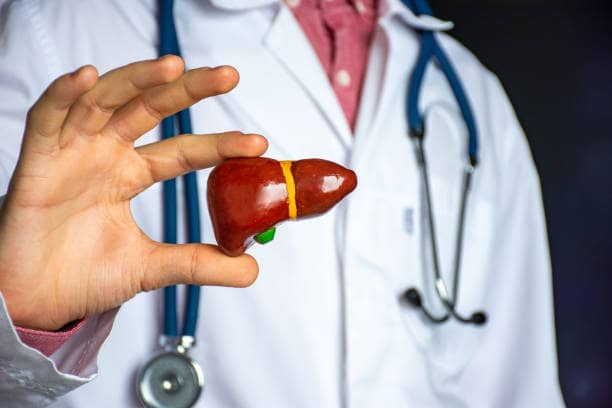How to Treat Hepatitis C : Hepatitis C is a significant global health concern, affecting millions of people worldwide. It is a viral infection that primarily targets the liver, causing inflammation and potentially leading to serious liver-related complications. Over the years, substantial progress has been made in the field of hepatitis C treatment, transforming the landscape of care and offering hope to those living with the disease. This article aims to provide a comprehensive guide to treating hepatitis C, covering strategies, advances in treatment, and potential future directions.

Understanding Hepatitis C:
Hepatitis C is caused by the hepatitis C virus (HCV), which is primarily transmitted through exposure to infected blood. The virus can be acute or chronic in nature. Acute hepatitis C refers to the initial infection, which may or may not cause symptoms. Chronic hepatitis C occurs when the virus remains in the body for more than six months, potentially causing long-term liver damage.
Symptoms and Diagnosis:
Hepatitis C is often called “silent epidemic” because many people don’t experience noticeable symptoms during the early stages of infection. However, as the disease progresses, symptoms may include fatigue, jaundice, abdominal pain, and a general feeling of general bodily discomfort. To diagnosis hepatitis C, doctors typically conduct blood tests to detect the presence of HCV antibodies and the virus itself.

Traditionally, hepatitis C treatment involved interferon-based regimens that often had significant side effects and suboptimal cure rates. However, a major breakthrough occurred with the development of direct-acting antiviral (DAA) medications. DAAs are oral medications that target specific steps of the HCV lifecycle, inhibiting the virus’s ability to replicate and spread within the body.
The current standard of care for hepatitis C involves DAA regimens, which are highly effective and well-tolerated. Treatment duration and specific medications vary based on factors such as the HCV genotype, the presence of liver cirrhosis, and previous treatment history. These regimens have revolutionized hepatitis C management, achieving cure rates exceeding 95% in most cases.
Advances in Hepatitis C Treatment:
- High Cure Rates: The introduction of DAAs has significantly increased the likelihood of curing hepatitis C. These medications have shown impressive success across various patient populations and genotypes.
- Antiviral Medications: Direct-acting antiviral drugs(DAAs) have transformed hepatitis C treatment. They specifically target the virus and have higher cure rates with fewer side effects compared to older treatments. Common DAAs include sofosbuvir, ledipasvir, glecaprevir, an pibrentasvir. Treatment duration can vary based on the factors such as the genotype of the virus and the patient’s medical history.
- Liver Transplant: In cases of severe liver damage, a liver transplant might be necessary. However, treating the underlying hepatitis C infection before tansplantation is essential to prevent the new liver from becoming infected.
- Improved Safety Profile: Unlike earlier treatments that often caused severe side effects, DAAs are generally well-tolerated, with fewer adverse reactions. This has made treatment accessible to a broader range of patients, including those with comorbidities.
- Shortened Treatment Durations: With the development of newer, more potent DAAs, treatment durations have become shorter, ranging from 8 to 12 weeks for most patients. This has improved patient adherence and overall treatment outcomes.
- Pan-Genotypic Medications: Some newer DAAs are pan-genotypic, meaning they can effectively treat multiple HCV genotypes. This simplifies treatment decision-making and expands options for patients.
- Combination Therapies: Researchers are exploring combination therapies involving different DAAs to enhance treatment efficacy and address potential drug resistance.
- Reduced Liver Complications: Successful hepatitis C treatment can reduce the risk of liver cirrhosis, hepatocellular carcinoma, and the need for liver transplantation.
Future Directions and Research:
While significant progress has been made, ongoing research aims to address several challenges and improve hepatitis C treatment further:
- Global Access: Ensuring access to DAA medications in low- and middle-income countries remains a priority to reduce the global burden of hepatitis C.
- Resistance Management: Continued surveillance of potential drug resistance and the development of new medications to overcome resistance are vital for long-term treatment success.
- Optimizing Treatment in Special Populations: Tailoring treatment for specific populations, such as people with advanced liver disease, children, and individuals with comorbid conditions, is an area of active investigation.
- HCV Elimination: Many countries have set ambitious goals to eliminate hepatitis C as a public health threat. This involves strategies such as screening, diagnosis, and linkage to care, in addition to providing effective treatment.
- Development of Vaccines: While no licensed vaccine for HCV exists, research into vaccine development continues, aiming to prevent new infections and complement treatment efforts.
Lifestyle Modification:
1.Alcohol and Substance Use: Alcohol and certain substances can accelerate liver damage. It’s advisable to avoid alcohol and consult your doctor about any medications or supplements you’re taking.
2. Balanced Diet: A balanced Diet rich in fruits, vegetables, and whole grains support liver health. Your doctor may recommend specify dietary changes based on your condition.
3. Physical Activity: Regular exercise can help improve your overall health and support your immune system’s response to the infection.
Prevention: Preventing hepatitis C involves practicing safe behaviours:
1. Needle Safety: If you inject drugs, use sterile needles and avoid sharing them.
2. Safe Sex: Practice safe sex by using condoms to reduce the risk of transmission.
3. Blood Products: Ensure that any blood products you receive are tested for hepatitis C.
Conclusion:
The landscape of hepatitis C treatment has undergone a remarkable transformation in recent years. The advent of direct-acting antiviral medications has revolutionized care, offering high cure rates with improved safety and shorter treatment durations. These advances have brought us closer to the goal of eliminating hepatitis C as a public health threat. As research and development efforts persist, the future holds even more promising possibilities for enhancing treatment outcomes, expanding access, and ultimately improving the lives of millions affected by this condition.







6 thoughts on “How to Treat Hepatitis C?”